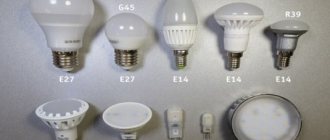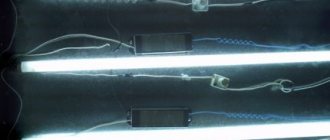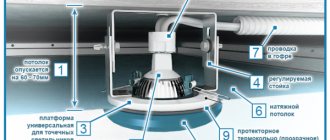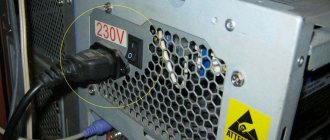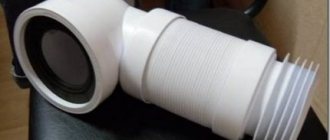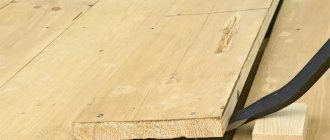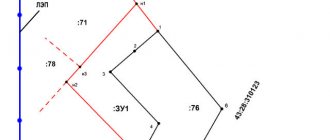Tips: how to unscrew the socket if a light bulb has burst
If a light bulb suddenly bursts, don't panic. It can be easily replaced if you know in what order to act and what tools to use. A light bulb can burst for many reasons. Its shelf life may have expired, perhaps there was a voltage drop or the light bulb was of poor quality.
A simple solution for unscrewing the cartridge is to use pliers. In this case, you need to grab the base as carefully as possible, otherwise there is a risk of damage to it.
It is important to note that the entire operation will take place with the lights off, so you need to take care of a flashlight in advance
How to unscrew a light bulb:
- Take a plastic bottle.
- Melt the neck of the bottle.
- Insert the melted part into the base and leave for a quarter of an hour.
- The bottle should be turned counterclockwise.
This technique will keep the cartridge safe and sound. A broken lamp can be pulled out easily with a wad of newspaper or duct tape. When unscrewing, you should not make sudden movements - everything should happen smoothly and accurately. Interestingly, most often the light bulb breaks due to the fact that the base is stuck. You can prevent the base from boiling - this will greatly simplify the task of unscrewing the lamp if necessary. To do this, before installing the light bulb, you need to outline the base with graphite. Graphite will not allow the base to boil.
How to unscrew a light bulb: 4 effective ways
Before unscrewing the light bulb, you should disconnect it from the electricity. Many people change light bulbs and do not even suspect that for some this simple procedure can turn into quite a big problem. “How to unscrew a light bulb?” – This question is often asked by those who are faced with a problem when a light bulb gets stuck or bursts right in the socket. The reasons for a light bulb failure can be different: it can become rusty, stick, or simply break. You need to carefully remove a broken light bulb, otherwise the lighting fixture can be damaged in such a way that repairing it will be extremely problematic.
4 ways: how to remove the base from a light bulb
It often happens that when you try to replace a lamp, you discover that it cannot be unscrewed. There can be several reasons for a light bulb to break. One of the reasons may be the poor quality of the lighting device itself. Manufacturers often skimp on components by using poor quality materials.
The reason that the light bulb does not unscrew from the socket may be poor electrical contact where the thread connects.
The problem of the inability to remove the light bulb from the socket can be prevented. To do this, you need to follow the rules for installing and dismantling the light bulb. It is important that the light bulb is screwed in according to the power of the lighting fixture. The light bulb should be screwed tightly into the socket, but so that it can be easily unscrewed.
How to remove the base:
- For safety, the first thing you need to do is wrap the light bulb (if it is whole) with a soft cloth.
- If the thread is stuck, you can move it using a special spray or, if it is not available, an alcohol deodorant. Sprinkle the solution on the place where the light bulb is stuck and wait until the thread is covered with this substance. After this, you need to try to remove the light bulb again.
- If the light bulb bursts, you first need to get rid of the sharp fragments. You can remove the base using pliers or round nose pliers. The base must be opened with pliers and unscrewed. You need to unscrew it clockwise.
- You can unscrew the base using a screwdriver, a wine stopper, or a wad of folded thick paper.
The main thing is to try to open the base. This technique will allow you to grasp the object well and fix it. An interesting way to unscrew the base is to use a plastic bottle. The neck of the bottle must first be heated and then inserted into the base. This simple trick will allow you to unscrew a light bulb that is stuck in the base.
How to unscrew a light bulb if it's stuck
Many people don’t think about the fact that problems can arise when unscrewing a light bulb. However, experience shows that it is not always possible to simply remove the light bulb due to its breakage or deformation of the lighting fixture. You can cope with the problem yourself if you know what tools and techniques to use.
Before you begin the operation of unscrewing a stuck light bulb, you need to make sure that safety precautions are fully observed.
The place where repair work is being carried out must be completely de-energized. To ensure complete safety, turn off the electricity by turning off the circuit breaker. For ease of work, it is necessary to install a stable table or stepladder.
How to unscrew a light bulb that is stuck:
- Prepare the main tool: thin-lipped pliers.
- Knock down all the insides that will interfere with getting to the cartridge.
- Using pliers, try to gently crush the metal of the base inward. Different parts of the base need to be crushed a little bit in different places.
If the light bulb is stuck, you can dismantle it using pliers
This method can be called radical, since without proper care the base can be trusted. During work, it is important to pay attention to the fact that it is not the lamp that needs to be held, but the socket itself, otherwise it may spin. If all actions were done correctly, the twisted metal will fall out, releasing the cartridge.
What to do if a light bulb in a chandelier explodes
Anyone can unscrew a light bulb, provided it is intact and accessible. But many people become confused when the lamp in the chandelier bursts. Removing the residue is dangerous, as careless movement can cause cuts. It is convenient to remove the remaining glass and unscrew the base using pliers that have pointed ends.
Users often have a question: “Which direction should I turn?” – Fix the pliers on the metal part and then turn it counterclockwise.
Another way to unscrew a lamp that has burst is to use electrical tape. A ball is rolled out of it so that the sticky side is at the top, and then placed in the center and pressed tightly. When the light bulb sticks well, you need to try to pull it out.
An easy way to get a light bulb:
- Cut the potato in half.
- Press half of the potato onto the light bulb.
- When the edges of the broken light bulb cut into the root vegetable, the light bulb can be unscrewed.
If a light bulb breaks, you first need to take care of your own safety. Do not unscrew the light bulb until all broken insides have been removed. There are many ways to unscrew a broken light bulb; if one doesn’t work, you can always try another.
Tips: how to unscrew the socket if a light bulb has burst
If a light bulb suddenly bursts, don't panic. It can be easily replaced if you know in what order to act and what tools to use. A light bulb can burst for many reasons. Its shelf life may have expired, perhaps there was a voltage drop or the light bulb was of poor quality.
You need to unscrew the socket after the glass of the broken light bulb has been removed.
Before attempting to unscrew the light bulb, you must completely cut off the power to the lighting line.
A simple solution for unscrewing the cartridge is to use pliers. In this case, you need to grab the base as carefully as possible, otherwise there is a risk of damage. It is important to note that the entire operation will take place with the lights off, so you need to take care of a flashlight in advance.
How to unscrew a light bulb:
- Take a plastic bottle.
- Melt the neck of the bottle.
- Insert the melted part into the base and leave for a quarter of an hour.
- The bottle should be turned counterclockwise.
This technique will keep the cartridge safe and sound. A broken lamp can be pulled out easily with a wad of newspaper or duct tape. When unscrewing, you should not make sudden movements - everything should happen smoothly and accurately. Interestingly, most often the light bulb breaks due to the fact that the base is stuck. You can prevent the base from boiling - this will greatly simplify the task of unscrewing the lamp if necessary. To do this, before installing the light bulb, you need to outline the base with graphite. Graphite will not allow the base to boil.
Many have not encountered the problem when all attempts to unscrew a light bulb end in failure. But many also panic when they cannot remove the lamp from the base. How the light bulb is screwed in largely determines how it can be removed. You can unscrew a stuck or burst light bulb in many ways yourself. Before choosing the appropriate method, it is important to ask the question: “Why did the light bulb burst or get stuck?” At all stages of work, it is important to remember safety precautions.
How to unscrew a lamp with minimal effort
If a light bulb burns out or explodes, what is the first thing to do? If the lamp is intact, it is necessary to turn off the power to the chandelier and allow the lamp to cool. For greater safety and to avoid damage, wrap the flask with a soft, non-slip cloth and carefully begin to unscrew it. Do not use excessive force, as the flask can easily burst.
Let's look at the best ways to unscrew a socket and a broken light bulb. At the very beginning, you need to use pliers to break off the fragments of the flask to eliminate the possibility of injury. Then, using pliers with narrow and elongated jaws, clamp the edge of the base and slowly begin to unscrew.
You can do it differently. The pliers should be inserted into the base and opened, pressing the jaws against the inner surface. After this, with a little effort, begin to twist it in the desired direction.
There are several other ways to properly unscrew the base with your own hands. You can take a regular plastic bottle with a small neck. The neck must be heated so that it begins to melt. After this, it should be placed in the cartridge and allowed to cool, secured to the base. Gently rotating the bottle, we begin to unscrew the base.
There is another simple method that does not require special equipment. After all, it’s enough to find a medium or large-sized potato. It is cut into two parts. Take one half and carefully insert it into the base. Firmly held fragments of the bulb or the edge of the base penetrate inside the potato. After the lamp body is fixed, you can begin to unscrew it.
Without forgetting the safety rules, you can use other available means. For example, insulating tape collected in a lump with the adhesive layer facing out or ordinary newspaper will do. They are carefully inserted into the damaged base and gradually rotated counterclockwise.
A burst lamp is not a big problem if the situation is handled competently, in compliance with safety rules and our recommendations. You can choose any method that will avoid injuries and damage. But do not forget to turn off the power to the lamp in advance.
How to unscrew a broken light bulb from its socket: a review of popular methods
When unscrewing it from the socket, the light bulb sometimes bursts. This is an unpleasant situation, since the lamp will still have to be taken out. This article will discuss how to unscrew a broken light bulb from its socket.
A lamp in a socket can burst for several reasons:
- Sudden voltage drop. In this case, sharp fragments remain in the base. You should be careful when dismantling to avoid injury.
- Careless twisting. Excessive force during dismantling is associated not only with carelessness, but also with rust that has formed inside the cartridge. It interferes with twisting. If you put in a little more effort than necessary, the light bulb will burst.
- Manufacturing defects.
Removing the remaining light bulbs should be done very carefully. There is no need to rush anywhere to avoid cutting yourself on pieces of glass or a broken cartridge.
Solutions
Before starting work, it is necessary to turn off the power to the lighting fixture. If the wiring was installed with several inputs, the power supply can only be turned off in a specific area. If this is not possible, you will need to disconnect the entire apartment.
You should not rely on the switch of a lighting device that has become unusable, since its power supply may initially be incorrectly arranged and interrupt not a phase, but a zero.
To illuminate the work area, you will need an autonomous light source (flashlight, mobile phone, candle, etc.).
Note! The remaining intact central tube in the base will have to be broken before dismantling work.
There are several options for solving the problem of a broken light bulb socket:
Potato
This method is especially relevant when glass shards protrude from the base. Cut one potato into two parts. We take one of them in our hand and “put” it on pieces of glass. After this, unscrew the base.
other methods
If the base does not unscrew, we use additional options:
- Dry rag or newspaper. We twist the material to make it denser. We direct the twist into the cartridge and take out the base.
- Special tool. This is the easiest way to unscrew the base. However, to implement it you will need to buy a special device in the store that looks like a clothespin.
- Scissors. We insert the scissors into the base. We open the tool so that the sharp edges catch the stuck part. Unscrew the base.
- We cut the base into fragments and take them out separately.
Possible problems
When replacing lamps you may encounter the following problems:
- The tendrils beat on the fingers. If they are too strong, removing the lamp may damage the ceiling. To solve this problem, just hold the springs firmly to prevent damage to your fingers and the ceiling. The light source must not be allowed to hang on the film; it is necessary to ensure that the springs get into the mounting ring behind the film.
- At one time, workers who installed the ceiling could leave exposed parts of the wire behind it. To eliminate this problem, even after a complete blackout of the house (apartment), it is better to wait a few minutes before starting work. Otherwise, there is a risk of getting an electric shock.
- You should not unscrew incandescent and halogen lamps immediately after they burn out, they are hot at that moment and can burn your hands. From surprise, you can drop the lamp and break it in the room.
- If a fluorescent lamp breaks, it is necessary to clean the room of mercury. We will have to urgently remove traces of metal from the walls and floor.
Frequent burnout of light bulbs used in a suspended ceiling is due to several factors: long operation of the backlight, installation violations: insufficient fixation, incorrect connection to the wiring, neglect of the instructions, touching the light bulbs with hands without gloves, etc. Fortunately, modern technologies, used when assembling and connecting lamps, they allow you to remove lamps and replace them with new ones without much effort.
No matter how the lamps are unscrewed, the house must be completely disconnected from electricity.
The more responsible the approach to removing a damaged element, the better the quality of this work will be performed. And this, in turn, extends the life of lamps in suspended ceilings and the canvases themselves.
All lamps can be safely removed from a suspended ceiling. Be careful when working with ceiling systems
Excessive haste and overestimation of your capabilities can lead to damage to the coating with any careless movement.
Radical ways to remove a lamp
If none of the above methods fails and the remains of the lighting element are still inside the socket, then it may even be necessary to replace the latter. An alternative to this measure could be a radical option, which involves crushing the base and then removing it. Moreover, in this case, tools with thin jaws (for example, pliers) may be required.
And the technique itself is associated with a high probability of damage to the cartridge, which is why such work should be performed with extreme caution
Considering all of the above, we can say that unscrewing a stuck lamp yourself is not so difficult, the main thing is to follow the standard recommendations.
Pliers
This is the most common method of removing the base from the socket. To do this, you will need pliers (nose-nose pliers, round-nose pliers or their equivalents). This tool has thin "jaws" that easily grip the flat edges of the metal part of the light bulb.
- If the edge of the base is recessed into the cartridge, then first bend one or two sections with a flat screwdriver.
- Next, grab the base with a tool and slowly unscrew it outward. At the same time, hold the lamp shade with your other hand so that it does not come off. It is very important to do everything carefully, because... you can damage the inner circumference and threads, in particular the cartridge itself, which will render it unusable.
If you can’t grab the edges of the base with pliers, use one more tip. Insert the tool inside the base, spread the movable tongs until they touch the walls. And unscrew the base.
Pliers
Causes of sticking and deformation of lamps
It is quite difficult to unequivocally answer the question of what can cause the lamp to deform. After all, this may be due to both the poor quality of the electrical network (voltage drops) and the operational characteristics of the lighting element itself (low quality components, expiration of service life, etc.).
Whereas the reasons for the lamp base sticking to the electric socket are more obvious and are associated with failure to ensure proper electrical contact at the connection (screwing in) point. Therefore, when installing household lamps, it is advisable to follow the following recommendations:
- Handle the lamp only with clean hands, excluding any greasy stains;
- Screw the lamp tightly into the existing socket;
- Use lamps that comply with the technical characteristics of the lighting device;
In addition, some experts recommend covering the threaded connection of the base with a small layer of graphite, which will also increase the electrical contact patch and minimize the likelihood of sticking.
Varieties
To solve the problem of removing a damaged light bulb, you do not need to call a specialist. The process of replacing a light bulb is not that complicated. First you should get acquainted with the basic principles of operation of lamps in a suspended ceiling.
Lamps using several types of lamps are installed on the suspended ceiling:
Familiar incandescent lamps. Currently, they are not particularly popular due to their uneconomical nature, although they have the advantage of being able to work at any temperature and humidity.
The procedure for unscrewing each type of lamp is different, so before removing them it is important to find out what type of light source it is. Since the light bulbs will have to be replaced more than once, it will not be superfluous to get acquainted with the constituent elements and remember their names
All lamps have a protective cover, main body and special clamps
Since the light bulbs will have to be replaced more than once, it will not be superfluous to get acquainted with the constituent elements and remember their names. All lamps have a protective cover, main body and special clamps.
But there are other parts in their design, knowing about which makes it easier to dismantle any type of light bulb:
- a housing that is invisible from the outside because it is located in the space under the ceiling, the wire and cartridge are hidden in it;
- spring-type antennae serve to hold lamps and fix them on the ceiling surface;
- a protective cover made of plastic or glass also serves as a light diffuser and protects the entire set from dust;
- spring ring for fixing the protection cover.
In order to remove a light bulb, it is not necessary to remove the lamp completely. Usually you only have to remove the cover and ring. Light bulbs have different mounting methods, so when choosing a new lamp, be sure to consider the type of base it has.
The light bulb is stuck in the socket, what to do: possible options
Pliers or pliers
This method can be called the simplest, just take pliers or pliers, hook the lamp and begin to unscrew it from the socket. There are no difficulties, there is one thing - you can accidentally damage the cartridge. Also find out what programs exist for calculating cable cross-section.
Therefore, try to do everything carefully; use pliers to grab only the base from the edge. We don't grab other elements, especially if there is glass left. It can fall off and fall on you at any moment.
Plastic bottle
This method is considered excellent, but a little complicated. To unscrew a broken light bulb from the socket, you need to do the following:
- We take a regular bottle with a small neck.
- Heat the neck until the plastic begins to melt.
- Insert the neck into the cartridge.
- We wait until it cools down a little.
- Unscrew the broken light bulb.
Potato
We RECOMMEND this method, because it is the simplest and safest. To do this, take regular medium-sized potatoes.
Cut it into two parts; if you take large potatoes, you will only simplify your task. Just remember, you will have to throw it away eventually; you shouldn’t use other fruits, their texture is too soft.
We insert half a potato into the socket and unscrew the lamp that has burst. As you can see, there are no problems here at all; it’s easier to think of nothing.
Potato
The method is simple, although it does not always help. To do this, you need to have pieces of glass sticking out of the base; in this case, there is no need to remove them. To implement this method you need:
- Cut a fairly large potato (raw) in half and separate its parts. They must be clean and dry.
- Place a potato over the fragments so that they cut firmly into the flesh.
- All that remains is to unscrew the base from the socket.
After use, potatoes should be thrown away. Other fruits and vegetables will not help because their flesh is not as dense.
The potato will help you unscrew the base
Top 5 ways to unscrew a light bulb base from a socket
The situation when a light bulb bursts or when unscrewing the base remains in the socket has happened to many people. There is a solution to the problem and there are plenty of different methods on how to unscrew a light bulb base from a socket. The reasons for this situation are most often: poor quality of the lamp, voltage drop, exhaustion of the lamp's service life, burnout.
Pliers or needle nose pliers
The first method you should resort to is using pliers or needle-nose pliers. The latter are more convenient due to the fact that they have thin, elongated “sponges” that can reach many hard-to-reach places. They are very convenient for capturing small parts. It will also be easy to separate the base from the socket.
Using needle nose pliersImportant! The handles of thin-nose pliers should be rubber or plastic. If such a tool is not at hand, the last resort is to wrap the handles with electrical tape in several balls
Procedure:
Remove any remaining glass, if any. Next, grab the base with a tool, twisting it outward. The lamp shade must be held so that it does not come off
It is important not to damage the circumference of the cartridge. If the base does not give in, you can carefully bend its sides inward and then unscrew it.
During the process, the base may begin to tear or become deformed, this is not a big deal, it will even be easier to remove it, the main thing is that it does not damage the cartridge.
If you can’t grab the edges, you can try another option - place the needle-nose pliers inside the base and push the ends apart so that they rest against the side walls. You need to twist counterclockwise.
Potato
The method is simple, although it does not always help. To do this, you need to have pieces of glass sticking out of the base; in this case, there is no need to remove them. To implement this method you need:
- Cut a fairly large potato (raw) in half and separate its parts. They must be clean and dry.
- Place a potato over the fragments so that they cut firmly into the flesh.
- All that remains is to unscrew the base from the socket.
After use, potatoes should be thrown away. Other fruits and vegetables will not help because their flesh is not as dense.
The potato will help you unscrew the base
Unscrew the cartridge
The essence of the method is to disassemble the cartridge itself. True, this can only be done with carbolite cartridges, which are installed in old lighting fixtures from the USSR era. Ceramic ones, which are mainly used in modern chandeliers, are not intended for such disassembly. Let's return to disassembling the cartridge. It consists of the following parts:
- 2 carbolite halves.
- Threaded connection.
- Ceramic core with brass contacts.
One of the halves contains a metal sleeve into which the base is screwed. To remove the base, you must separate the base. All that remains is to unscrew the base; the already familiar thin-nose pliers will help with this. After removal, the cartridge should be collected and can be used again.
We use a cork
To implement this method you will need a cork plug. It needs to be adjusted to the size of the base. When the plug fits tightly into it, you should carefully unscrew it along with the stuck element of the light bulb.
Unscrewing with a cork
If there are pieces of glass left, you can string a cork on them. In this case, it is necessary to achieve their dense recessing into the soft cortical surface.
What to do if the light bulb is simply stuck in the socket
All of the above methods are suitable if the light bulb is not stuck, but simply burst. An option is to unscrew the socket from the chandelier.
If this method cannot be implemented, then you will have to break the glass part of the lamp and use one of the options proposed above.
You may come across advice to use a spray like WD-40 or “KONTAKT”. But there is a risk that even with the machines turned off, the device will be dangerous. In this case, it will not be possible to check whether there is a phase, since the lamp is stuck. The only way when using such a spray is absolutely safe is to remove the chandelier completely, disconnecting it from the power cables.
Conclusion
You can unscrew the base if it is stuck in the socket in different ways
The most important thing is to take safety precautions and turn off the power to the lamp before starting work.
Ways to remove a broken light bulb
There are several ways you can remove the remaining bulb and socket from the socket. You should choose a specific one based on the current situation and the funds you have available.
Figure 1: Light bulb design
Method number 1. Using pliers.
The most common way to unscrew a broken light bulb from a socket is with pliers, needle-nose pliers or other derivatives of this tool. But, this method is relevant in situations where, after the glass bulb breaks, the base protrudes slightly beyond the cartridge, otherwise there is a high probability of damaging the cartridge itself. And you will have to change not only the light bulb, but also the socket.
The whole procedure consists of the following steps:
- Remove the voltage from the lamp;
- If there are glass fragments peeking out of the cartridge, choose an area where there are none or break out the area for the pliers, since during the process of unscrewing the glass will begin to crumble and you may cut yourself;
- Use the pliers to grasp the edge of the base; if the edge is recessed into the cartridge, you can first bend it inward with a screwdriver so as not to damage the cartridge sleeve;
Rice. 2: Use pliers to grasp the edge of the plinth - Carefully unscrew the base; if it does not give in right away, then the remains of the lamp may have stuck to the socket and to remove it you need to make a lot of effort; if you are afraid of breaking the socket, use another method.
Method number 2. Disassembling the cartridge.
The most optimal way is to disassemble the socket; it allows you to safely remove the stuck base, but this option is not suitable for all lamp models. Those in which the cartridge is not removable or is covered by elements of the chandelier do not allow you to unscrew the broken one using this method. Structurally, collapsible models consist of a housing and a contact plate; the housing can be divided into two parts.
To use this method you will need:
- Turn off the voltage at the input to the apartment;
- Unscrew the case into two halves - as a result, you should have contacts with the lid, and the shirt should be unscrewed with the base and the remains of the light bulb;
- After which you will see that the base is screwed into the sleeve; if it is stuck to it, it should be picked out with thin-nose pliers, a screwdriver, or lightly hit from the back side;
- It is much easier to unscrew the remains of the light bulb when the socket is in your hands.
Method number 3. Plastic bottle.
If, due to the design features of the lamp or lampshade, you cannot reach the fragments of the light bulb with a tool and remove them, an ordinary plastic bottle and lighter will help you. The entire extraction process consists of the following steps:
- Unscrew the cap from the bottle;
- Heat the neck of the bottle with a lighter until the plastic begins to melt;
Rice. 3: Heat the neck of the bottle - Insert the bottle into the broken light bulb and wait 10 - 20 seconds until the plastic sets;
Rice. 4: Insert the bottle into the broken light bulb - Gently twist the bottle to remove the remaining bulb.
This method is good because it allows you to maintain the integrity of the cartridge and its elements. But you can only unscrew a lamp with an E27 socket.
Method number 4. Champagne cork.
This method is suitable for those situations where, when the light bulb was destroyed, the leg (plug) fell out or it can be pulled out painlessly.
Rice. 5: Remove the leg
- First turn off the voltage;
- Using a knife, sharpen the edge of the plug so that it fits snugly into the hole in the base;
Rice. 6: insert the plug into the base - When you feel that the plug is pressed tightly against the inner surface of the broken light bulb, begin to slowly turn it.
As a result, the rest of the light bulb will come out along with the plug. It should be noted that if there are shards of glass left around the edges, they must be removed to avoid damaging your fingers while unscrewing.
Method number 5. We use potatoes.
Almost every home has fresh potatoes. This method is suitable for cases where there are sharp shards of glass left around the edges. First turn off the voltage at the input panel.
You just need to cut the potato in half or in another ratio so that the remaining part has a cut and fits comfortably in your hand.
Rice. 7. Cut the potatoes
Along the cut line, carefully place the potato on the leg and place it on the glass fragments so that the vegetable sits tightly.
Rice. 8: Place the potato on the light bulb
It is then used as a handle to unscrew the remaining bulb from the socket.
Rice. 9: light bulb in potato
It should be noted that there is no need to pre-wash or soak the potatoes. Since it will become slippery and the tightly seated base may not give way. The potato itself is already wet at the cut point, so after unscrewing, be sure to wipe all surfaces and wait until they dry before screwing in the light bulb, reapplying the voltage and turning on the light.
You can also replace the potatoes with a bar of laundry soap, but depending on its consistency and shape, the bar may not be suitable for unscrewing a broken light bulb.
Causes of damage
Any electrical appliance must be operated with the utmost caution. But not in every case this is ensured 100%
So why do light bulbs burst? There may be several reasons:
- Manufacturing defect. Violations can be made both on the flask itself and in the design of the base.
- Increased voltage in the network. Incandescent lamps can operate above the standard voltage, for example up to 230 V. But large surges can cause damage. This is especially true if deviations are regular.
- Problems in the contact part of the cartridge or in the switch. Often accompanied by extraneous sounds and flickering.
- Violation of the integrity of wire connections, violations made during wiring installation.
- Network overload with electrical appliances consuming a lot of electricity.
- Increased vibrations and mechanical damage.
- Operation in conditions of high humidity or temperature changes.
The result of such phenomena can be the situation shown in the photo, when a light bulb bursts.
Traditional methods
Yes, exactly the folk ones. Don’t be surprised, there will always be skilled people in any business. What to do if a light bulb bursts and how to remove it without resorting to the services of a specialist? True, all these methods are applicable to ordinary old-style lamps.
Method 1. Using a plastic bottle. Heat its neck over a candle or lighter. Insert it into the cartridge and wait until it cools down. We wait for the plastic to set and slowly unscrew the damaged lamp.
Method 2. The simplest and safest. Cut a medium-sized potato in half. We place it on the remains of the lamp and calmly remove it.
Method 3. This applies to light bulbs with a small base. These are usually used in carob chandeliers.
Method 4. Use a dry cork stopper from a wine bottle. We place it on the fragments and slowly remove it.
All of the above methods are suitable if you suddenly do not have a special tool at hand. But this is the case if the light bulb base has not melted and stuck to the socket. Then you certainly can’t do without a tool.
Important! Whenever manipulating lighting fixtures, you must always first turn off the power.
Unscrew the cartridge
The essence of the method is to disassemble the cartridge itself. True, this can only be done with carbolite cartridges, which are installed in old lighting fixtures from the USSR era. Ceramic ones, which are mainly used in modern chandeliers, are not intended for such disassembly. Let's return to disassembling the cartridge. It consists of the following parts:
- 2 carbolite halves.
- Threaded connection.
- Ceramic core with brass contacts.
One of the halves contains a metal sleeve into which the base is screwed. To remove the base, you must separate the base. All that remains is to unscrew the base; the already familiar thin-nose pliers will help with this. After removal, the cartridge should be collected and can be used again.
How to remove a light bulb from its socket if it breaks
You can easily deal with it only if there is no damage and the light bulb is in an easily accessible place. But sometimes you need to use your wits to replace a burnt-out item.
Unscrewing the light bulb in the suspended ceiling
Currently, hanging structures can be considered the most popular ceiling design option. They are able to completely transform the interior of a room, making it more spectacular and original. One of the advantages of such structures is the ability to hide various communications in them. Particularly attractive is the opportunity to equip built-in lamps. Such sources can be equipped with various types of lamps:
- Standard
- Luminescent
- Halogen
- LED
The design of built-in lamps is mostly the same. Therefore, it is enough to get acquainted with the common elements to understand how to replace standard or energy-saving light bulbs if necessary.
The main components of the design are:
Spotlights most often use halogen bulbs, which have to be changed no more than once every three years. If you need to make a replacement, you need to turn off the electricity in the room. First, remove the ring that secures the lamp. Then the plastic cover is dismantled, the burnt-out light bulb is unscrewed from the socket and a new one is installed. Some built-in sources hold the bulb in place using pins. In this case, it is carefully inserted with light pressure. If there is a click, the light bulb has taken its place.
Replacement must be done carefully, given that the ceiling material can be easily damaged. Experts recommend screwing in a new halogen light bulb with cloth gloves or using a dry cloth.
It is noticed that in this case it will last longer.
LEDs
High-quality LED products definitely do not explode. But cheap products from Chinese brands come from time to time. By definition, LEDs cannot explode, but an LED lamp is equipped with a power supply with a rectifier, which includes a filtering electrolytic capacitor, so it can explode. What is the reason?
To save money, the Chinese install elements designed for low voltage, for example, 63 Volts instead of 400. Under normal conditions, they still function somehow, but at the slightest deviation from the rated voltage upwards, they explode. As a result, the lamp housing may also rupture (although this rarely happens).
So we looked at the main reasons why light bulbs in a chandelier and other lamps explode. As you can see, lamp explosions mainly occur due to problems with the voltage in the network, poor quality assembly, or improper operation. We hope that the article provided was useful and interesting for you!
Ways to avoid trouble
To avoid getting into a situation where you have to look for a way to remove the base, it is recommended to adhere to the following rules:
- Do not install light bulbs whose power is greater than the power of the socket or lighting device. The higher the current in the lighting equipment and the brighter the light, the more thermal energy is released during its operation. As a result, the likelihood of lamp rupture increases.
- The lamp should “sit” tightly in the socket, but still, when screwing it in, you should not be too zealous.
- It is recommended to buy light bulbs from trustworthy sellers. Cheapness most often results in low-quality goods.
So, there is nothing difficult in unscrewing a broken light bulb from its socket. It is only important to work carefully and follow safety rules.
How to unscrew a lamp
A big problem for the owner of his own property is the removal of a broken electric lamp (there is nothing to grab onto), which is why this option requires detailed consideration.
The most common method for unscrewing a broken light bulb is to use power tools such as pliers or pliers. Whereas the method of work itself boils down to the fact that the base remaining in the cartridge is pushed apart from the inside by the jaws of the tool, after which the entire remaining part is unscrewed counterclockwise.
Or you should use sponges to hook the outer edge of the base (if it protrudes) and try to unscrew the remains of the lamp in this way.
However, when resorting to removing a broken lamp using this method, it should be borne in mind that it may first be necessary to remove any remaining glass, which involves the use of protective equipment (glasses, gloves, tools with insulated handles).
Sometimes any suitable accessory can be used as pliers: a spool of thread, a screwdriver handle, a tightly rolled roll of paper, and even soap. The main condition is that he can open the base from the inside so that it can rotate together with the improvised instrument. Well, of course, preference in this case should be given exclusively to dielectrics.
Based on the experience of many home electricians, it can be noted that even an ordinary PET container can help in the process of unscrewing a broken (burst) lamp. To do this, the neck of the bottle should be heated until soft (for example, using a lighter), and then fix the neck on the base for 10 - 15 seconds. When the PET container cools down and hardens, unscrewing the remains of the lamp will not be difficult.
How to unscrew a light bulb if it is stuck or burst in the socket
What could be easier than changing a light bulb in a chandelier or lamp?
But often things are not so simple; the light bulb can break, become stuck or rust. Here you need special methods so as not to damage your chandelier or other lighting fixture. It is impossible to give a clear answer as to why the light bulb does not unscrew, because there may be several reasons. Perhaps the components of your lamp are not of such high quality, unscrupulous manufacturers are trying to reduce the cost of the design, saving on material in this way, or using low-quality materials. Perhaps the reasons are related to poor electrical contact at the threaded connection .
But what can be advised to try to prevent such problems?
- Screw in light bulbs with a power no greater than the figure indicated on the lighting device as the maximum, in most cases this is 60W. The rule is more appropriate for incandescent light bulbs, since higher wattage incandescent light bulbs emit more heat and can damage both the lamp and the electrical connection (socket)
- The light bulb must always be screwed tightly into the socket, but when pressing it, look for a position for the light bulb so that it can immediately be screwed into its thread freely and without much effort.
- Do not leave greasy stains on the bulb bulb; this rule is especially important for halogen lamps. It is best to screw in light bulbs by wrapping the bulb in a thin cloth; in addition, this will protect your fingers if the light bulb breaks.
- There are special products in the form of sprays (for example, KONTAKT S61) that can be used to treat the connection, socket and thread of the light bulb and maintain reliable electrical contact for many years, even in not entirely favorable conditions, for example, high humidity. This product can also be used to treat slightly rusted contacts by cleaning them. Some experts recommend rubbing the threads with graphite, this could be a piece of brush from an electric motor or a thick pencil.
Before starting any work with the lamp, you must turn off the voltage supply to it. By turning off not only the switch but also the corresponding circuit breaker in the control panel.
How to unscrew a light bulb
If the light bulb is intact but cannot be unscrewed and you are afraid that it will burst, first of all you need to unscrew it by wrapping the bulb in a soft cloth.
To move stuck threads, you can use a special spray, it could be “KONTAKT” or maybe a WD-shka, in the worst case, you can use some kind of alcohol deodorant. You need to spray it on the thread and give time for the substance to seep through the thread, after which the thread should “move.” If the light bulb bursts, but the base remains inside and there is no need to catch it to unscrew it from there. You should immediately remove the protruding pieces of glass to avoid cutting yourself. The most applicable option is to use pliers or round nose pliers. The light bulb base remaining inside is pushed apart from the inside with the jaws of the pliers and unscrewed counterclockwise. Or you can use thin pliers to catch the outer edge of the base and try to unscrew it in this way. You can also use a softening spray (described above).
Instead of pliers, you can use other objects: the handle of a screwdriver wrapped in thick cloth, a soft wine rind, a tightly rolled wad of paper, or even a piece of soap of suitable thickness. The main thing here is to open the base from the inside so that you can turn the fixed object.
There is also an interesting way in which an ordinary plastic water or beer bottle can serve as a “unscrewing tool”. How it's done? The neck of the bottle is heated using fire until the plastic softens, you can use a lighter. Then the neck is squeezed into the base of the light bulb and held for 10 - 15 seconds. so that the plastic hardens and adheres to the base. After which the stuck light bulb is unscrewed.
There are times when the light bulb is “tightly” stuck or rusted and none of the methods presented above helps. There is one last radical way. You need pliers with thin jaws. First, we knock down all the insides in the cartridge so that only metal remains, and with the help of pliers we begin to carefully crush this metal inward, in different parts one by one and little by little. As a result, a piece of twisted metal will simply fall out of the lamp socket.
You should be careful because this method can damage the socket itself, in addition, if the socket in the lamp was poorly screwed to the lamp leg, it may spin. So when manipulating the lamp, you need to fix the cartridge itself in your hand and not the lamp.
elektt.blogspot.com
What to do if the light bulb does not come out of the socket?
Any adult, at least once in his life, has encountered a situation that seems simplest at first glance - an incandescent lamp has burned out and needs to be replaced. It may seem that no problems can arise here. Unscrew the burnt one from the chandelier, replace it with a new one - and that’s it. But even here troubles may await.
Due to high humidity (oxidation and rust on the base and inside the socket), due to a manufacturing defect in the lamp or a sudden voltage surge, a situation may arise in which the base remains inside.
It makes sense to figure out how to get the rest of the light element, i.e. how to unscrew the light bulb base from the socket. Someone might say, “Take off the lamp and work quietly.”
But there are much simpler options.
Options for the development of events
An incandescent (or halogen) light bulb burst due to a power surge or a manufacturing defect during operation. Then in the socket, in addition to the base itself, there will also be sharp fragments from the light bulb sticking out of it.
In this case, you need to be especially careful when dismantling the remaining part of the light fixture.
Or it may happen that the bulb breaks when unscrewing, if there is rust inside the cartridge that prevents the base from being unscrewed.
Also, the cause of such trouble can be a defect in which the flask itself easily separates from the metal base.
How to unscrew a broken light bulb in any of the above cases without resorting to the help of specialists? The main thing is calm. You should not rush anywhere when removing the remains of the damaged light element, so that no further trouble occurs, such as a cut on the glass or a broken cartridge.
Solution options
There are several ways to unscrew a light bulb if it has burst, and each of them is good in its own way. The main thing that needs to be done first is to turn off the power to the damaged chandelier or other lighting device.
Ideally, of course, if the electrical wiring was installed with several inputs, then it is possible to turn off the power from the circuit breaker to only part of the room, leaving yourself the opportunity to connect a portable lamp in the next room.
If this is not possible, then you will have to turn off the power to the entire apartment and illuminate it with a flashlight or cell phone when removing the broken light bulb. If there is a central tube left in the cartridge in addition to the base, it is carefully broken.
When the power is turned off, you should not rely on the switch of a broken lighting fixture - it may be powered during installation incorrectly and interrupt the neutral wire rather than the phase wire.
Well, then let’s look at the following options with which you can decide how to unscrew a broken light bulb from the socket.
Champagne cork
Similarly, you can use a wine or champagne cork. Its edges need to be slightly sharpened by chamfering, and then driven into the stuck base of the light bulb.
Slowly, using a gentle unscrewing motion, try to unscrew the base and pull it out.
Any metal base of any lamp with a screw base is unscrewed exclusively counterclockwise - this must be remembered so as not to waste energy and time.
Measures to prevent such troubles
The first thing to note is that you should not install lamps that exceed the limit of the possible power of the socket or lamp so that they do not burst. The fact is that the more current a lighting device consumes and the brighter it shines, the more heat is generated during its operation. And this can lead to the situation described above.
Of course, the lamp must be screwed tightly into the socket, but still, during installation, you need to find such a tightening point so that you can then unscrew it. There is no point in pulling the lamp as far as you can. You can also pre-coat the base threads with graphite.
There is no need to leave greasy stains on the glass; it is advisable to carry out the work with gloves. In addition, your hands will be more protected if the lamp breaks.
You should purchase lamps only in trusted stores and do not chase after cheap goods, which are most often illiquid, i.e., should not have gone on sale at all.
By following simple rules, you can be sure that even if such a nuisance happens, you can easily get rid of it.
Options for the development of events
An incandescent (or halogen) light bulb burst due to a power surge or a manufacturing defect during operation. Then in the socket, in addition to the base itself, there will also be sharp fragments from the light bulb sticking out of it. In this case, you need to be especially careful when dismantling the remaining part of the light fixture. Or it may happen that the bulb breaks when unscrewing, if there is rust inside the cartridge that prevents the base from being unscrewed.
Also, the cause of such trouble can be a defect in which the flask itself easily separates from the metal base.
Broken incandescent lamp
How to unscrew a broken light bulb in any of the above cases without resorting to the help of specialists? The main thing is calm. You should not rush anywhere when removing the remains of the damaged light element, so that no further trouble occurs, such as a cut on the glass or a broken cartridge.
